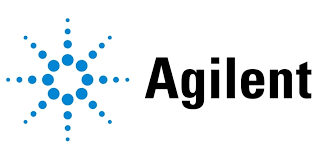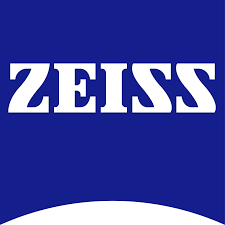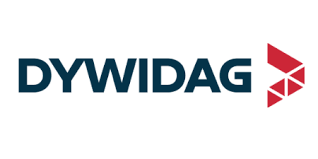Phytosterols Market Report
Published Date: 02 June 2025 | Report Code: phytosterols
Phytosterols Market Size, Share, Industry Trends and Forecast to 2033
This report provides a comprehensive analysis of the phytosterols market, covering key insights, trends, and forecasts from 2023 to 2033. Market size data, segmentation analysis, regional insights, and industry dynamics are included to aid stakeholders in decision-making.
| Metric | Value |
|---|---|
| Study Period | 2023 - 2033 |
| 2023 Market Size | $1.50 Billion |
| CAGR (2023-2033) | 6.0% |
| 2033 Market Size | $2.72 Billion |
| Top Companies | BASF SE, Cargill, Incorporated, Arboris, LLC, DuPont de Nemours, Inc., Kraft Heinz Company |
| Last Modified Date | 02 June 2025 |
Phytosterols Market Report (2023 - 2033)
Phytosterols Market Overview
Customize Phytosterols Market Report market research report
- ✔ Get in-depth analysis of Phytosterols market size, growth, and forecasts.
- ✔ Understand Phytosterols's regional dynamics and industry-specific trends.
- ✔ Identify potential applications, end-user demand, and growth segments in Phytosterols
What is the Market Size & CAGR of Phytosterols market in 2023?
Phytosterols Industry Analysis
Phytosterols Market Segmentation and Scope
Tell us your focus area and get a customized research report.
Phytosterols Market Analysis Report by Region
Europe Phytosterols Market Report:
The European phytosterols market was valued at 0.52 billion USD in 2023 and is forecasted to reach 0.95 billion USD by 2033. Factors such as a well-established food industry, increased consumption of health supplements, and legislative support for functional foods contribute significantly to the market's growth.Asia Pacific Phytosterols Market Report:
In the Asia Pacific region, the phytosterols market was valued at approximately 0.27 billion USD in 2023 and is expected to reach 0.48 billion USD by 2033. The growth is fueled by increasing health awareness, budget-friendly healthcare solutions, and rising dietary supplement demand among consumers in countries like India and China.North America Phytosterols Market Report:
North America holds a significant share of the phytosterols market, valued at 0.53 billion USD in 2023 with projections to reach 0.95 billion USD by 2033. The market growth is attributed to heightened awareness of dietary management, ongoing innovations in food formulations, and robust research initiatives in phytosterol applications across dietary supplements and functional foods.South America Phytosterols Market Report:
The South American phytosterols market is relatively smaller, valued at 0.05 billion USD in 2023 and projected to reach 0.09 billion USD in 2033. Key growth drivers include expanding food and beverage industries and the rising trend towards health-oriented products, influenced by changing consumer preferences.Middle East & Africa Phytosterols Market Report:
The Middle East and Africa phytosterols market, presently valued at 0.14 billion USD in 2023, is projected to grow to 0.25 billion USD by 2033. This growth is supported by increasing acceptance of health supplements and the development of the food processing sector in Nigeria and South Africa.Tell us your focus area and get a customized research report.
Phytosterols Market Analysis By Source
Global Phytosterols Market, By Source Market Analysis (2024 - 2033)
The phytosterols market is predominantly driven by plant sources, which occupy a significant market share. In 2023, plant sources represented approximately 88.23% share, a figure expected to remain stable through 2033. Meanwhile, synthetic sources, accounting for 11.77% in 2023, show potential for growth as innovations in synthetic phytosterol production emerge.
Phytosterols Market Analysis By Application
Global Phytosterols Market, By Application Market Analysis (2024 - 2033)
The application of phytosterols spans across various industry sectors. The food industry holds a major share at 62.86% in 2023, projected to maintain similar levels through 2033. Nutraceuticals occupy a significant sector as a health supplement, while the cosmetic application of phytosterols is gaining traction for its skin health benefits.
Phytosterols Market Analysis By Form
Global Phytosterols Market, By Form Market Analysis (2024 - 2033)
In terms of form, powdered phytosterols dominate the market representation with 88.23% share in 2023 due to their versatility in various applications. Liquid forms, while smaller, demonstrate a rising trend among manufacturers exploring new product formats, with expectations to reach 11.77% share by 2033.
Phytosterols Market Analysis By End User
Global Phytosterols Market, By End-User Market Analysis (2024 - 2033)
End-users of phytosterols include the food and beverage, nutraceutical, pharmaceutical, and cosmetic industries. The food and beverage sector leads with a significant market share, followed by nutraceuticals aware of the health benefits offered by phytosterols in dietary supplements.
Phytosterols Market Analysis By Type
Global Phytosterols Market, By Type Market Analysis (2024 - 2033)
Different types of phytosterols include beta-sitosterol, campesterol, and stigmasterol. Beta-sitosterol holds the largest market share due to its widespread application in dietary supplements and functional foods, while campesterol and stigmasterol exhibit growth potential as consumer interest in their health benefits gathers pace.
Phytosterols Market Trends and Future Forecast
Tell us your focus area and get a customized research report.
Global Market Leaders and Top Companies in Phytosterols Industry
BASF SE:
BASF SE is a global chemical company and one of the leading producers of phytosterols, known for its commitment to sustainability and innovation in food technologies.Cargill, Incorporated:
Cargill is a major player in the food industry, providing high-quality phytosterol products, focusing on health-enhancing ingredients for nutrition solutions.Arboris, LLC:
Arboris specializes in plant sterol technology and offers a range of phytosterol products designed for food and dietary applications.DuPont de Nemours, Inc.:
DuPont is known for its innovative solutions in food ingredients, including phytosterols and their usage in functional foods.Kraft Heinz Company:
Kraft Heinz actively incorporates phytosterols in its range of health-oriented food products.We're grateful to work with incredible clients.









FAQs
What is the market size of phytosterols?
The global phytosterols market is valued at approximately $1.5 billion in 2023 with a projected CAGR of 6.0% through 2033. This growth signifies rising consumer awareness regarding health benefits and increased adoption in various food and beverage applications.
What are the key market players or companies in the phytosterols industry?
Key players in the phytosterols industry include Cargill, BASF, and DuPont. These companies lead through product innovation, extensive distribution networks, and strategic partnerships, enhancing their market presence while catering to the growing demand for phytosterol-enriched products.
What are the primary factors driving the growth in the phytosterols industry?
The growth in the phytosterols industry is primarily driven by increasing health consciousness among consumers, rising prevalence of cholesterol-related issues, and the adoption of phytosterols in functional foods, nutraceuticals, and dietary supplements, highlighting their cardiovascular benefits.
Which region is the fastest Growing in the phytosterols market?
The Asia Pacific region is emerging as the fastest-growing segment in the phytosterols market, expected to reach $0.48 billion by 2033, as health-focused consumers increasingly seek natural ingredients in food and supplements, coupled with rising economic standards.
Does ConsaInsights provide customized market report data for the phytosterols industry?
Yes, ConsaInsights offers tailored market report data for the phytosterols industry. These customized reports include in-depth insights and specific regional or segment analyses to meet diverse business needs and strategic planning.
What deliverables can I expect from this phytosterols market research project?
Expect comprehensive deliverables including detailed market analysis reports, trends, forecasts, competitive landscape evaluations, and strategic recommendations tailored to your specific interests and market segments within the phytosterols industry.
What are the market trends of phytosterols?
Current trends in the phytosterols market include a shift towards plant-based nutrition, increased demand for functional foods, and growing investments in R&D for enhancing phytosterol application in various industries, especially in nutraceuticals and food products.
